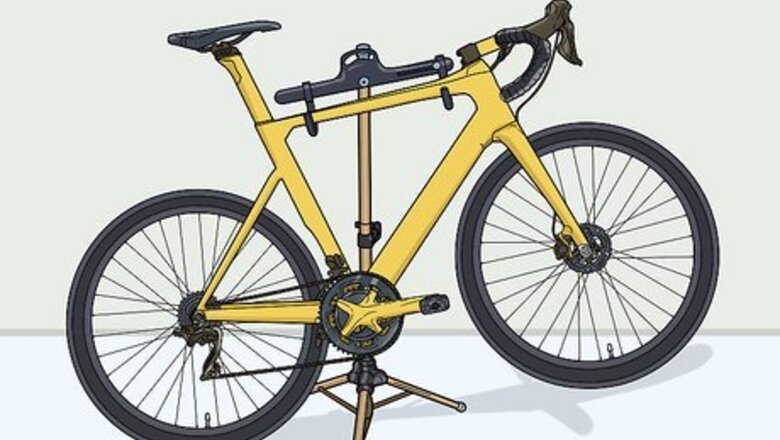
views
Realigning the Calipers
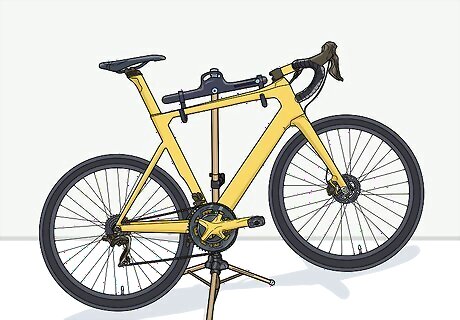
Place the bike in an elevated bike stand. Carefully pick up the bike and place it onto a bike stand so you can access the hydraulic brakes easily. Make sure you have enough space around the bike to move freely around it. You’ll also need to be able to reach the handlebars while you’re adjusting the brakes, so make sure you have enough space.Tip: If you don’t have an elevated bike stand, you can place the bike upside down so the wheels are facing upward, but be sure it’s well balanced so it doesn’t fall over while you’re working.
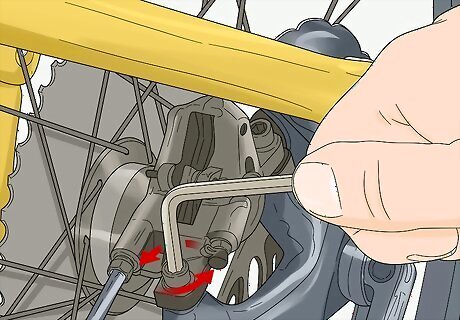
Loosen the mounting bolts on the outside of the brakes with a hex wrench. Take a hex wrench and carefully turn the 2 outer mounting bolts on the brakes counterclockwise to loosen them so you can adjust the brakes. Loosen the mounting bolts just enough so you can wiggle the internal mechanisms of the brakes but not so much that they’re disassembled. You can find hex wrenches at bicycle repair shops, at your local hardware store, or by searching online. If you only need to adjust the brakes on 1 tire, do not loosen the mounting bolts of the other tire or you could cause the rotor and calipers to be misaligned.
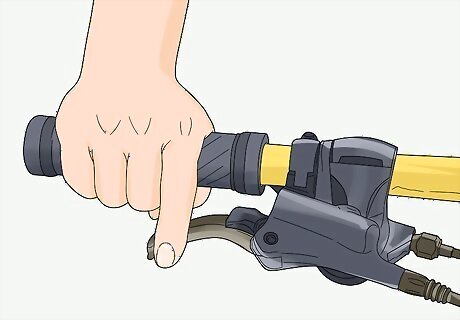
Squeeze the brake lever on the handlebars to center the calipers. The calipers are metal brackets that squeeze the brake pads against the rotor to slow down your bike. Locate the brake lever on the handlebars that control the brakes that you’re adjusting. Squeeze and hold the lever down to realign the calipers so they’re centered over the rotor.
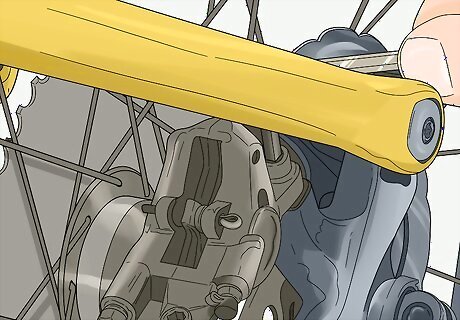
Rotate the centering bolts if the brake lever isn’t enough to align the calipers. With the brake lever on the handlebar depressed, check the rotor to see if it’s centered between and in contact with the brake pads. If it isn’t, use a hex wrench to turn the centering bolts holding the calipers to tighten the brake pads around the rotor. Use small adjustments and don’t overtighten the centering bolts or the brake pads will rub against the rotor. Squeezing the brake lever is often enough to realign the calipers.
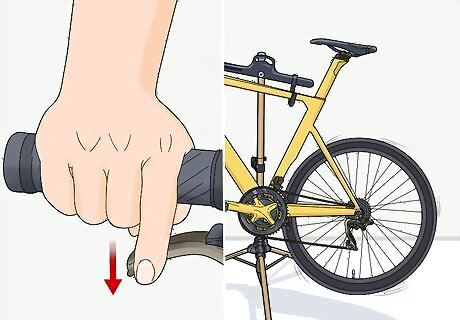
Release the brake lever and spin the wheel to check for rubbing. Once you adjust the calipers, let go of the brake lever and check to see if there’s even space between the rotor and the brake pads. Give the tire a good spin and look for any rubbing. Listen for clicking or scraping sounds as well. If you do see or hear signs of rubbing, adjust the centering bolts until the rotor rests evenly between the brake pads.
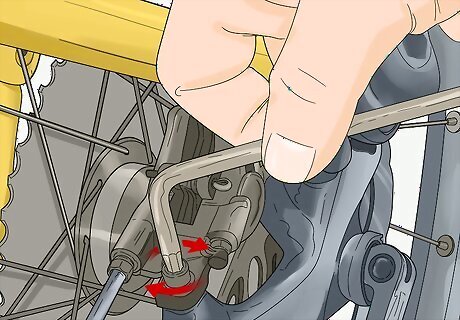
Tighten the mounting bolts so they’re fully secure and take a test ride. Use a hex wrench to fully tighten all of the mounting bolts so the brake assembly is held firmly and securely. Take the bike off of the rack and go for a short test ride in a safe area such as a parking lot or driveway to test out the brakes to make sure they’re working. Always go for a safe test ride before taking the bike out for a longer ride.
Checking for Rotor Rub
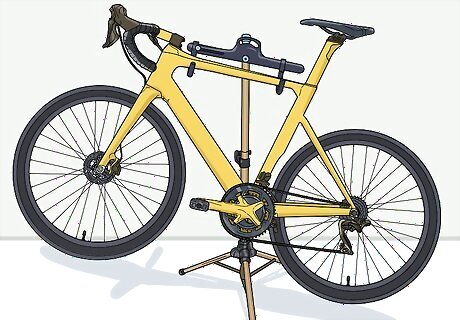
Put the bike in an elevated stand so the tires can rotate. Place the bike in a stand that allows both of the tires to freely turn and so you can easily move around it to see the rotors and calipers. If you don’t have a stand, flip the bike upside down and balance it on the handlebars and seat.
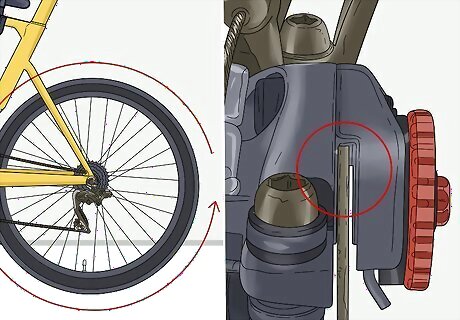
Spin the wheels and check the gaps between the rotor and brake pads. Give the wheel a good turn so it continues spinning freely and locate the small rotor plate. Look in the space between the 2 brake pads on each tire for the rotor. Check both tires and find the rotor plate between each set of brakes. If your bike only has brakes on the rear tire, then you’ll only need to check there.
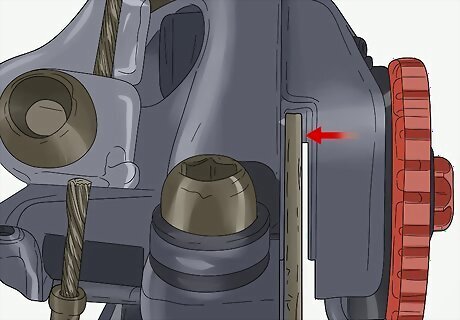
Look for rubbing between the rotor and the pads. While the tire is rotating, watch the rotor spin in the space between the brake pads. Check to see if the small rotor is touching or rubbing against 1 or both of the brake pads. If there is any rubbing, then you’ll need to adjust the calipers to realign the rotor. If your bike has brakes on both the front and rear tire, check the rotors on both for rubbing.

Listen for a scraping sound that signals rotor rub. In addition to checking the small rotor plate to see if it’s rubbing against the brake pads, listen for a clicking or scraping noise while the tire spins. If you hear any abrasive sounds, the calipers will need to be realigned to adjust the brakes. If you see the rotor rubbing against the brakes, you’ll also likely hear it scraping. It may be difficult to see if the rotor is rubbing against the brakes, so listening can help you identify the problem.




















Comments
0 comment